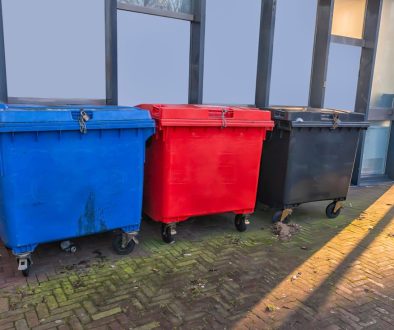As the construction industry progresses, so too must the methods and processes behind responsibly disposing of hazardous waste. Striving towards a more sustainable environment, we must place importance on recycling and safe disposal practices for aggregates, hazardous waste, and other materials within the building and construction sector. Implementing effective waste management strategies plays a pivotal role in reducing pollution, conserving natural resources, and ensuring the environmental safety of our communities.
In this comprehensive guide, we will delve into the importance of responsible hazardous waste disposal in the construction industry. We will explore recycling processes and techniques that can be implemented to safely manage and dispose of hazardous waste on the construction site. Additionally, we will discuss the necessity of proper waste management when using aggregates and other materials, ensuring efficient and sustainable construction practices while promoting a greener future.
Embark on a journey with us as we uncover the significance of responsible hazardous waste disposal and its relation to recycling, aggregates, and the overall sustainability of the construction industry. By adopting these practices, you can contribute to a more environmentally friendly construction sector, fostering a safer and healthier environment for future generations. So let’s begin and explore the world of hazardous waste disposal in construction, discussing essential tips, guidelines and management strategies to ensure a more sustainable future for all.
1. Identifying Hazardous Waste in Construction
Hazardous construction waste can stem from various sources, including building materials, chemicals, and waste generated during demolition and renovation. To ensure safe and effective waste disposal, it is critical to identify and categorise hazardous waste properly. Some common hazardous waste types in construction include:
- Asbestos: A building material historically used for its insulation and fire-resistant properties, whose fibres can cause severe respiratory issues when inhaled.
- Paint: Solvent-based paints and coatings contain hazardous chemicals that can contaminate the environment if not managed correctly.
- Batteries and electronics: Electronic equipment and batteries can contain hazardous materials, such as lead and mercury, that pose risks to human health and the environment if not handled properly.
- Contaminated soil: Soil that has been polluted by oil, chemicals, or other hazardous substances must be removed and managed safely.
2. Recycling and Proper Disposal of Hazardous Waste
Recycling hazardous materials, where possible, can minimise waste disposal impacts on the environment. However, the correct disposal of these hazardous materials is essential for the safety of both humans and the environment. Here are some waste disposal options to consider:
- Asbestos disposal: Proper asbestos disposal involves adequately sealing the material in airtight containers and disposing of it at a designated asbestos landfill site. It is essential to adhere to local regulations and guidelines for handling and disposing of asbestos.
- Paint recycling: If in usable condition, paint can be donated to local organisations or repurposed for other projects. Unusable paint should be disposed of at designated paint recycling facilities or through specialised paint disposal services.
- Battery and electronic recycling: Many electronic devices and batteries can be recycled through dedicated electronic waste recycling programmes. These programmes can recover valuable materials and prevent hazardous chemicals from contaminating the environment.
- Contaminated soil management: Contaminated soil must be transported and disposed of according to applicable regulations and at approved hazardous waste disposal facilities.
3. Integrating Hazardous Waste Management into Your Construction Project
Having a comprehensive hazardous waste management plan is essential for all construction projects. Effective integration of such a plan into your project can help prevent environmental contamination, minimise safety risks, and ensure regulatory compliance. Here are some steps to integrate hazardous waste management into your construction project:
- Incorporate waste management plans: Evaluate all potential sources of hazardous waste in your project and design waste management strategies catered to addressing specific risks and challenges.
- Train employees: Educate your staff about proper waste handling and disposal procedures, ensuring they can safely manage and dispose of hazardous materials on the construction site.
- Implement on-site storage and disposal solutions: Provide adequate, secure storage for hazardous waste materials and establish procedures for transporting and disposing of waste safely and responsibly.
- Monitor waste management activities: Regularly assess the effectiveness of your hazardous waste management practices, addressing any issues or shortcomings to improve the process continually.
4. Building a Greener Future Through Responsible Waste Management
Sustainable waste management practices in construction involve handling hazardous waste and addressing general waste and aggregates. We can help build a greener future by implementing responsible waste management practices. Here are some methods to enhance overall waste management strategies:
- Reduce waste generation: Plan your construction projects efficiently, aiming to minimise waste generation by accurately estimating material requirements and reusing materials where possible.
- Recycle and repurpose: Implement recycling and repurposing programmes for non-hazardous waste, such as waste timber, metals, and plastics, to reduce waste sent to landfills and conserve natural resources.
- Partner with green suppliers: Work with suppliers prioritising sustainable and eco-friendly materials, offering waste management solutions and recycling options aligning with your commitment to environmental stewardship.
Conclusion
Responsible hazardous waste disposal in construction is crucial for the safety of both humans and the environment. By integrating effective waste management plans into your project, recycling where possible, and addressing the proper disposal of hazardous materials, you can help create a more sustainable construction industry. In addition, paying close attention to the management of aggregates, recycling, and general waste, and developing effective waste minimisation strategies will contribute to a greener future.
Get in touch with Enviro Skip Hire today to learn more about our comprehensive waste management solutions for your construction project, including hazardous waste disposal, recycling services, and aggregates. By partnering with us, you can ensure that your construction project remains sustainable, efficient, and compliant with environmental regulations, paving the way for a cleaner, safer future for all.




